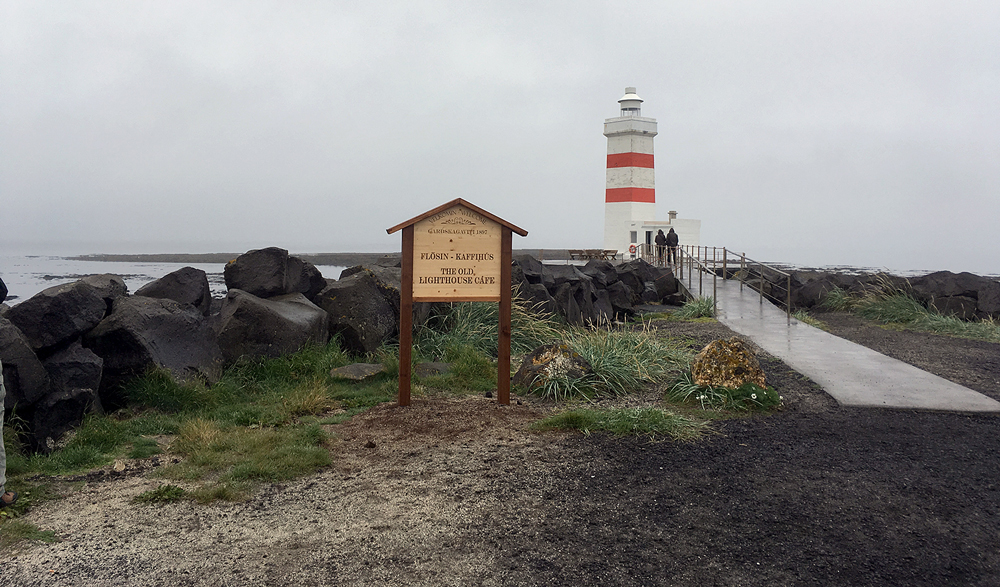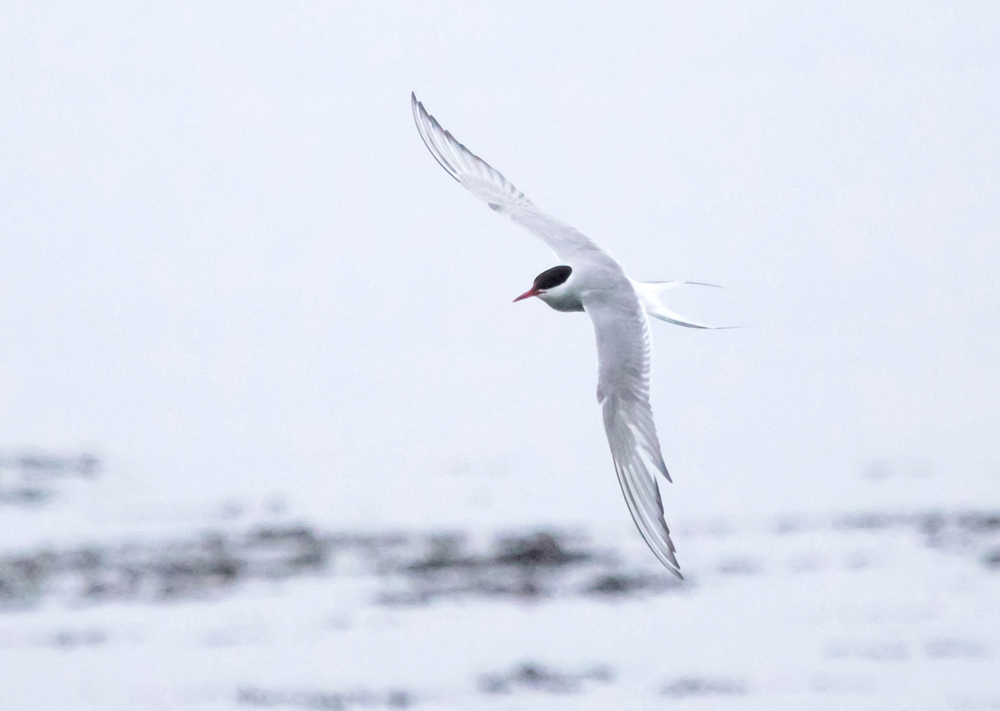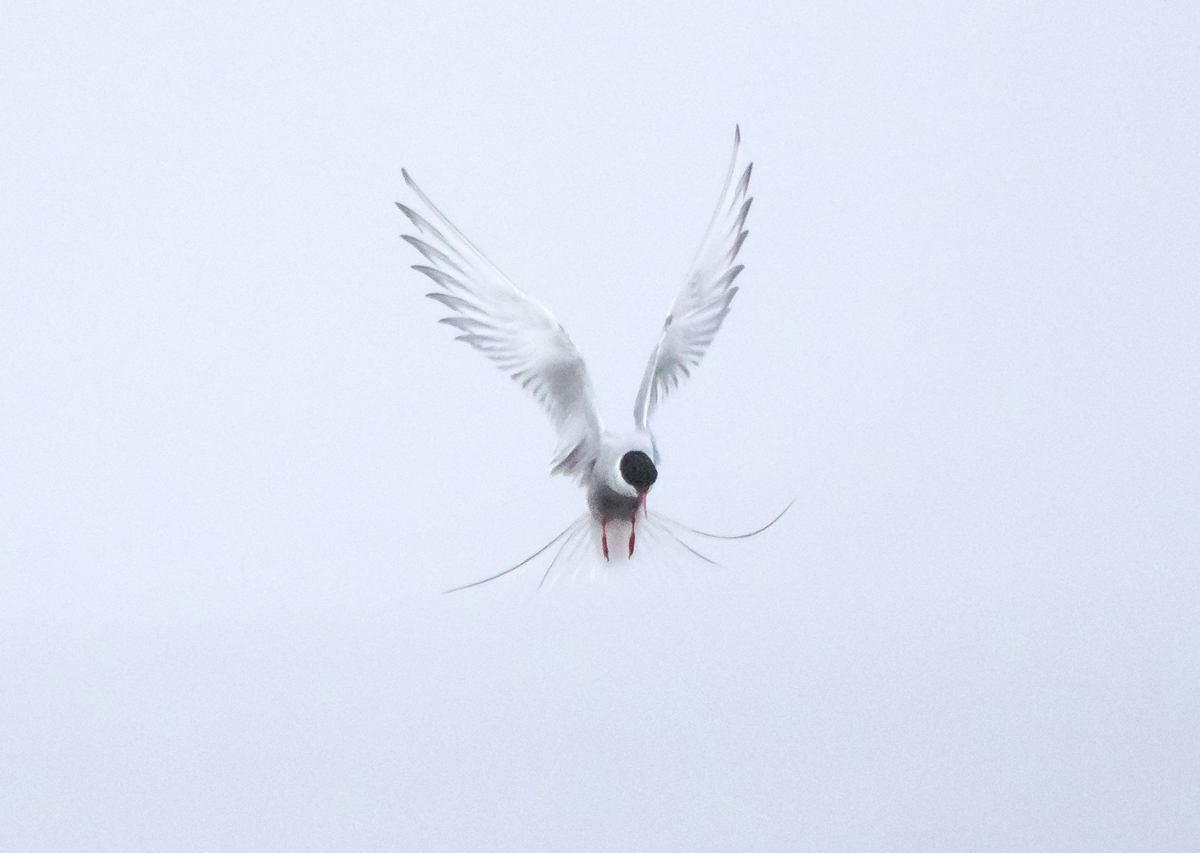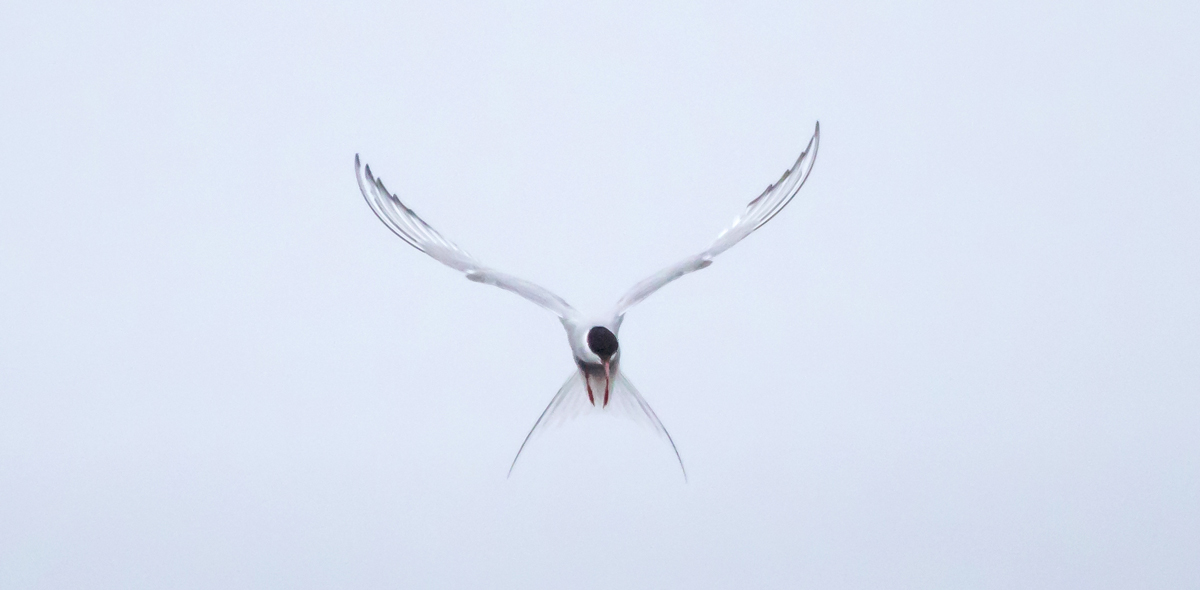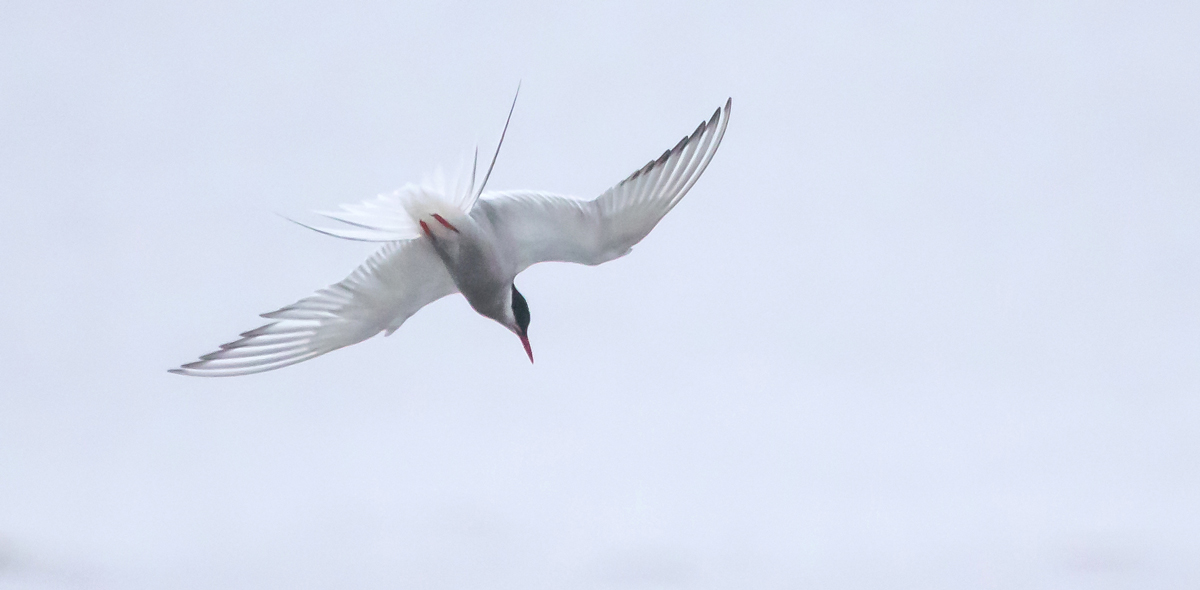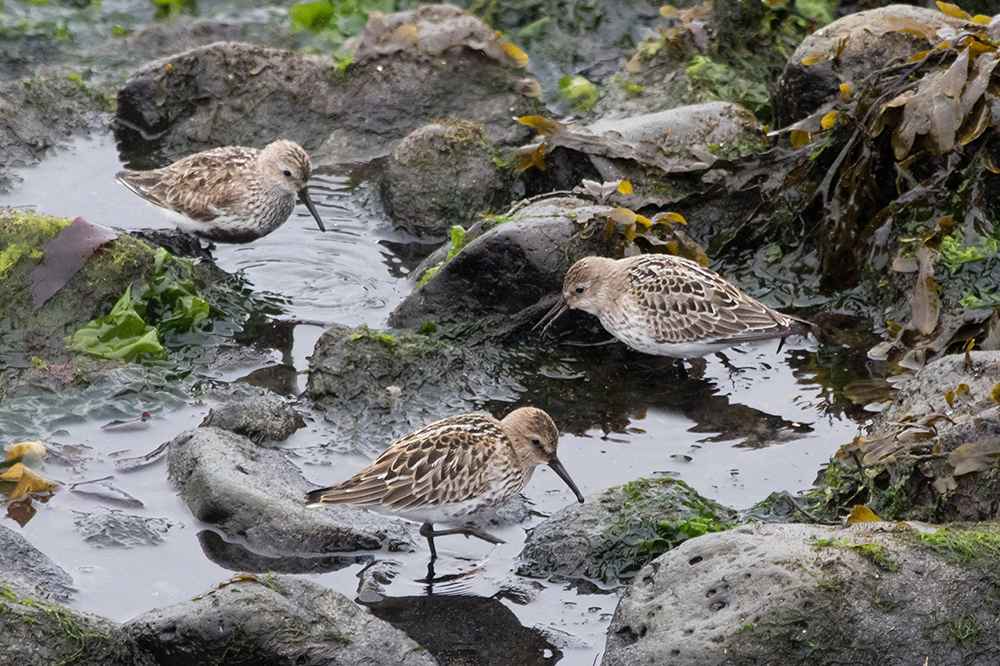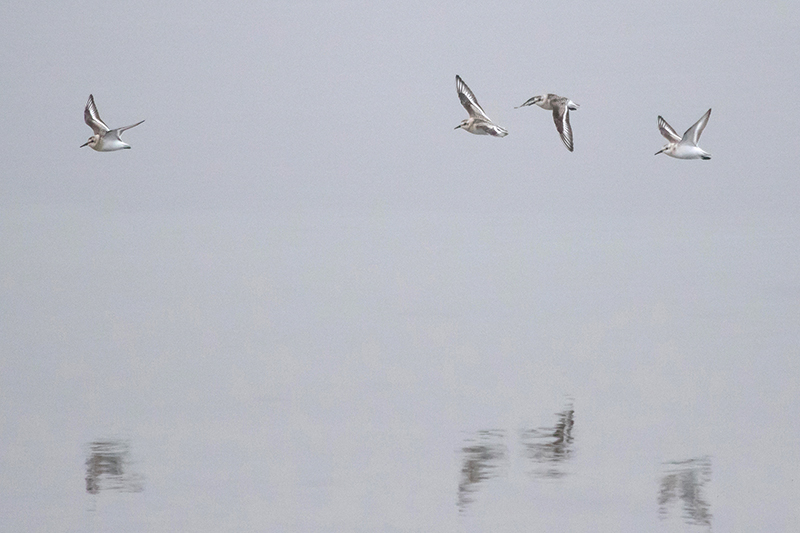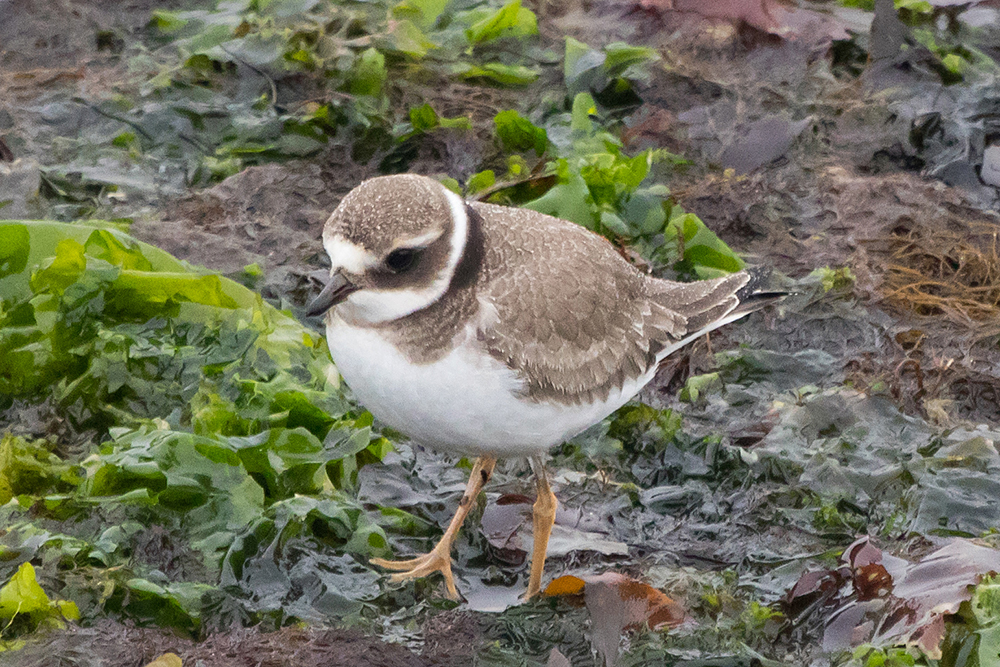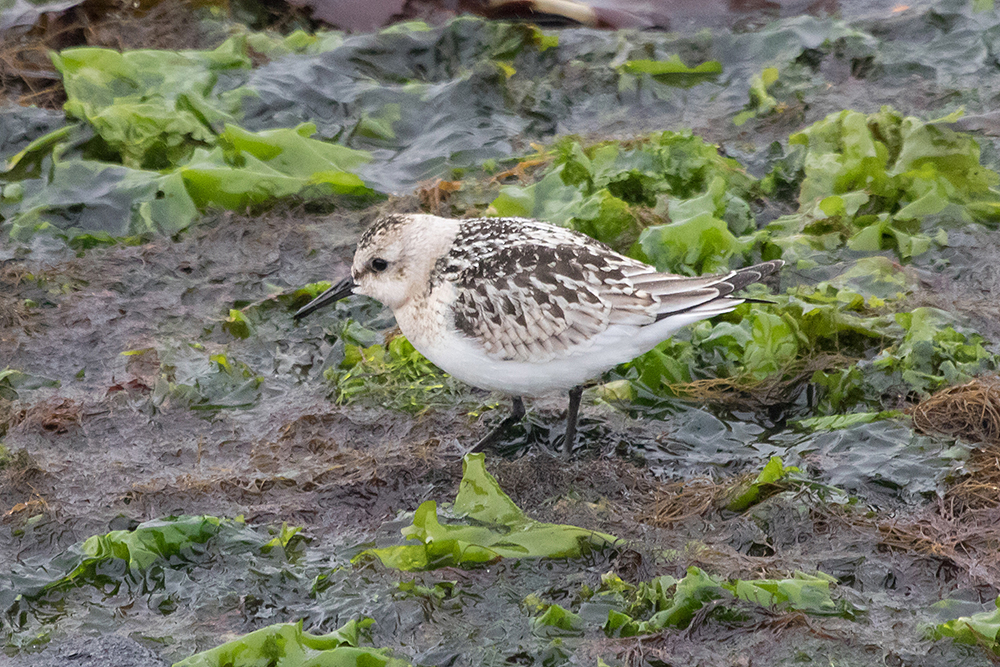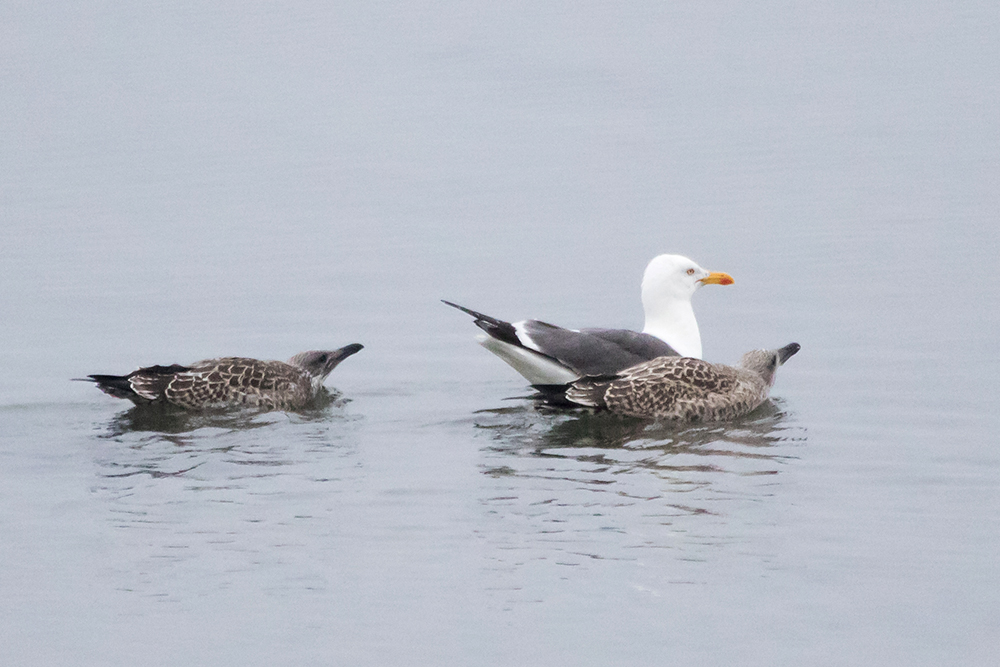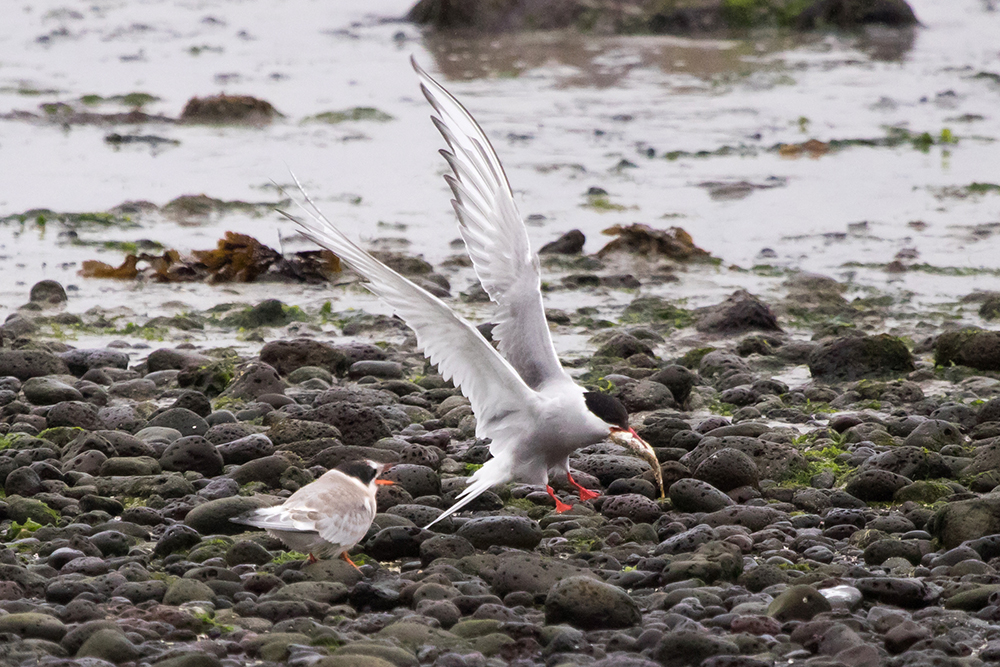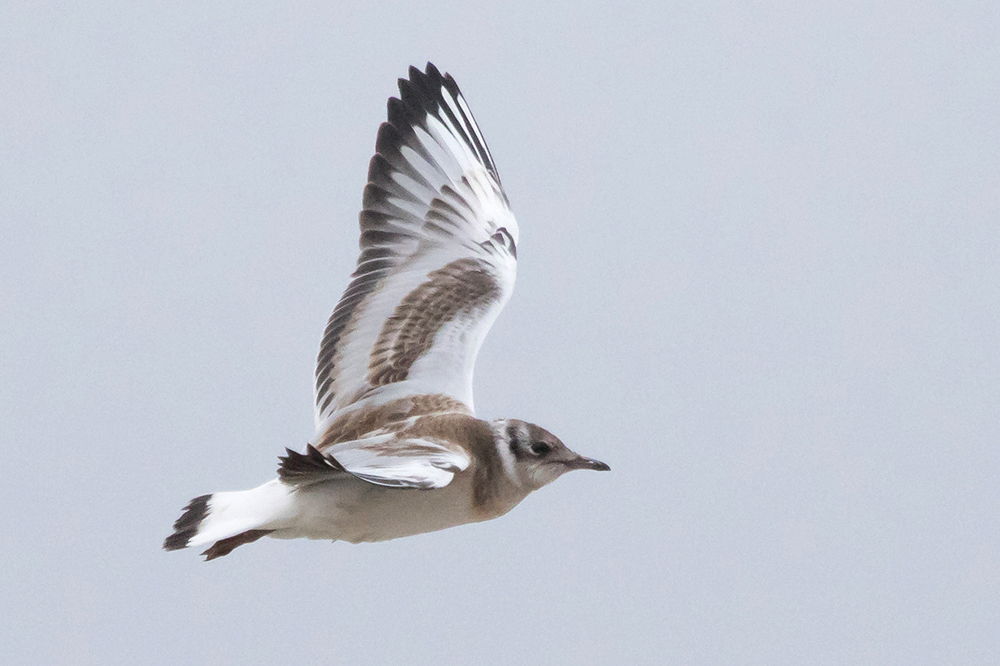
- About
- Library
-
Essays
Eric Dinerstein William C. Young
- Plants
- Birds
Iceland, 20-25 August 2016
Day 1: Sunday, 21 August, part 2/5
Reykjanes Peninsula: to Garðskagi Lighthouse
The scenery we passed through once outside the city was rugged, the predominant colors being green and black. Come to think of it, it was rugged even with buildings and houses as well as in the outskirts, the earth looking very much like upheaved asphalt, humped up with large gaping cracks running through. Moss, grass, and lichen grows on and around these, and small compact plants of various kinds.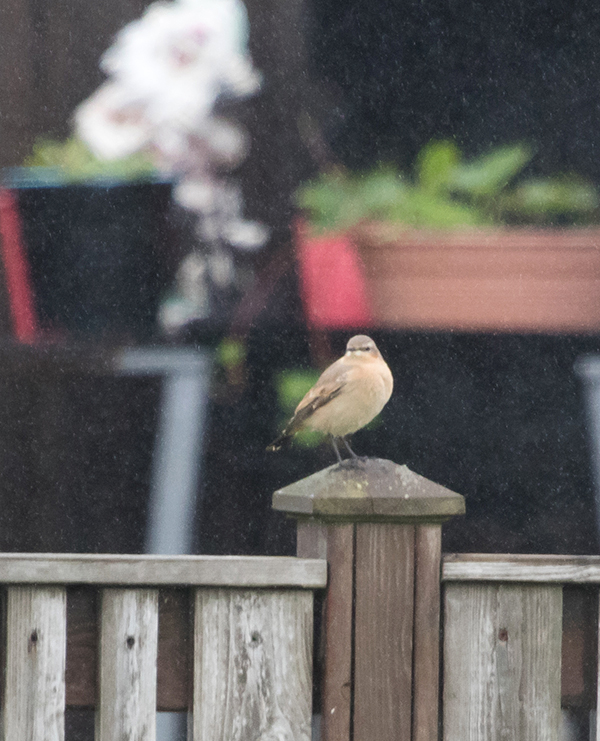
Northern Wheatear through the falling mist Just after 11:00, as we got close to the area of the lighthouse, I spotted a small passerine (perching bird) on the right in someone's yard. I stopped right in the road so we could see what it was: my first wheatear. There were very few cars on the roads once we got outside of town, and even through town the traffic was light. There aren't many passerines in Iceland, so any spotting of one was notable to me. It was an odd experience for the landscape and sky to be so still; I didn't realize how much I take all the activity of small birds back home for granted. This made me wonder if all the ambient activity makes Icelanders a little nervous when they go to countries with so many small birds around.
I also wondered where the wheatear got its name, and what it has to do with wheat anyway, and Bill explained that the name is actually a linguistic corruption of "white arse", which definitely suits the bird. Its warm tawny body blends into the environment rather well, but then there's that flash of white when it takes off.
At 11:10 we reached the Garðskagi Lighthouse. The weather was still chilly and grey, very overcast and misty, a bummer for photos, but somehow fitting to the environment and I wouldn't have minded it if I hadn't been trying to see new birds and get photos. The temperature was in the upper 50s (F). We stayed there for an hour, watching mostly black-backed gulls, Arctic Terns, Dunlin, and plovers. It was drizzling or misting the whole time we were there, and we had to towel off the gear once back in the car.
— eBird checklist for the Lighthouse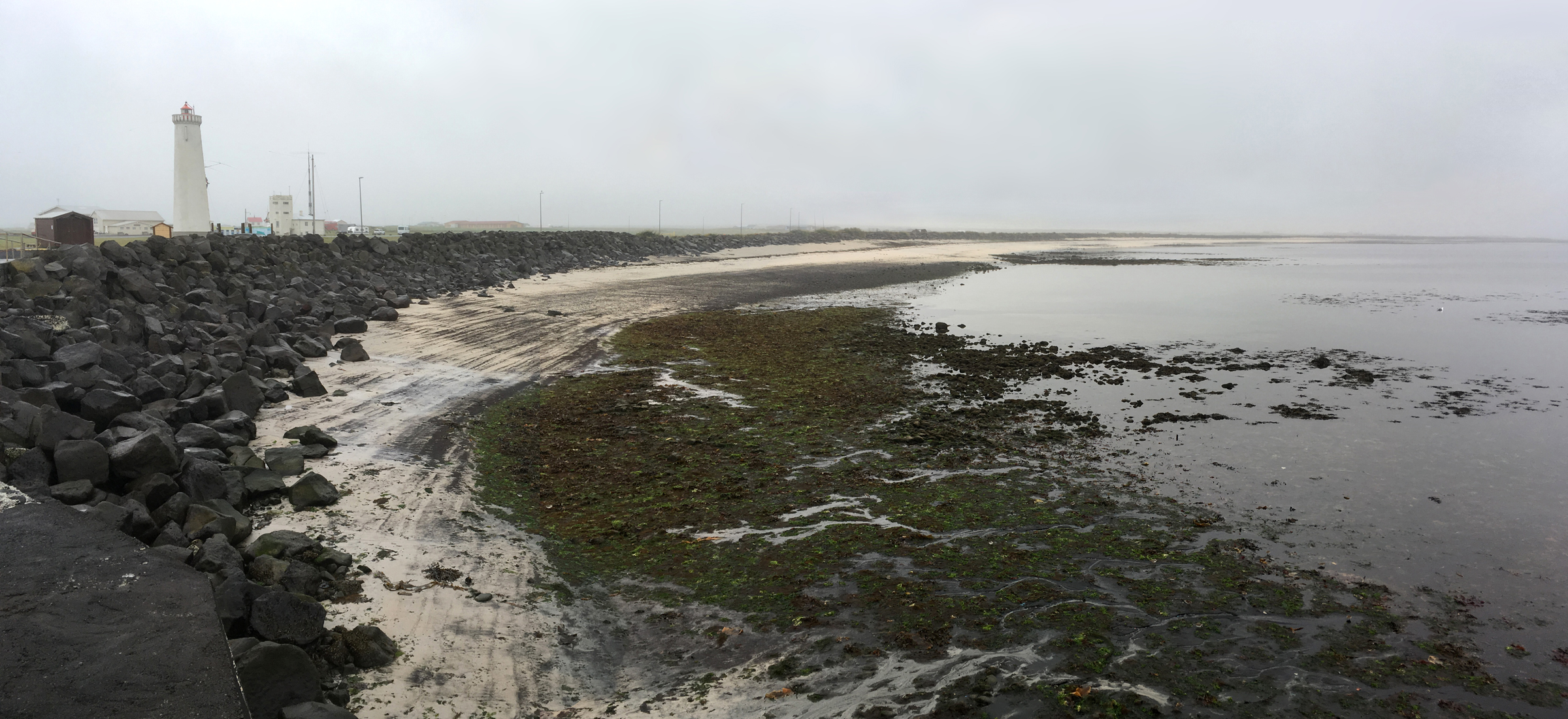
The lighthouse and surrounds We also spotted 2 seals here, but too distant for good photos. One was just a head sticking out of the water, while the other was up and banked on a sandbar, slowly waving a flipper around.
There's a campground on the land right next to the lighthouse jetty. Unlike American campgrounds, you wouldn't know it wasn't just a grassy field if not for the cars and tents scattered on it. This turned out to be the case for all the camping areas I saw; I didn't observe anything like site delineations, intentionally level spots, picnic tables, numbers on posts, or utility posts. I think you just put it wherever you want, and that appeared to go for pretty much anywhere - even if it wasn't an official campground.
Here's a Dermandar panorama I made there, though this one was made at the end of the trip on my way out of town. It may as well have been the same day, for the look of the weather. I used the iPhone app DMD to make this panorama, which can then be uploaded to their website where it gets dropped onto a map. You can explore areas of the map by viewing all the panoramas people have made and uploaded with this app, or see a collection of your own panoramas.
Here's a gallery of graceful Artic Terns in the mist. It was hard to choose onlt this many, because even though they're not technically great, I really like the ethereal quality the poor conditions of heavy overcast + mist gave them.
The terns were fun to watch and photograph, and there were several kinds of small shorebirds hunting in the rocks and sea lettuce.
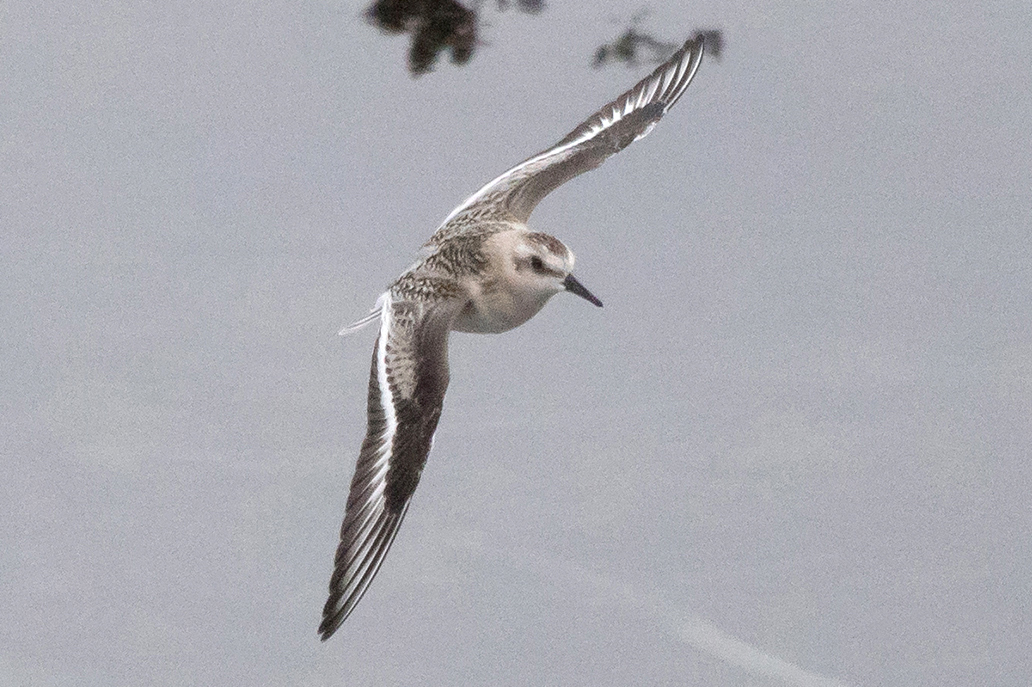
Sanderling in flight 
Sanderling with wingtips dropped 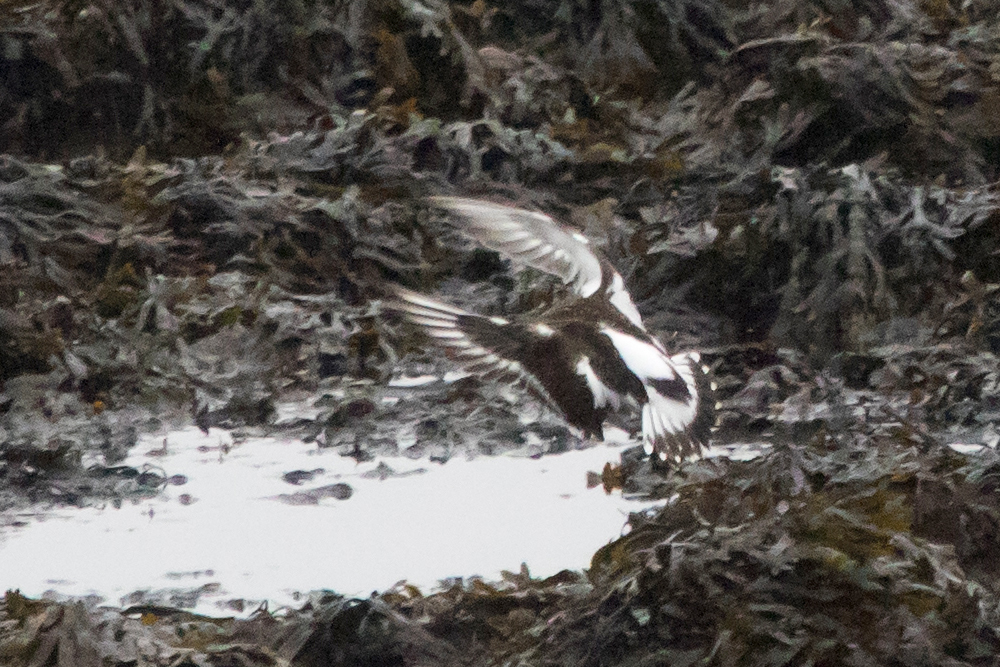
Ruddy Turnstone coming in for a landing 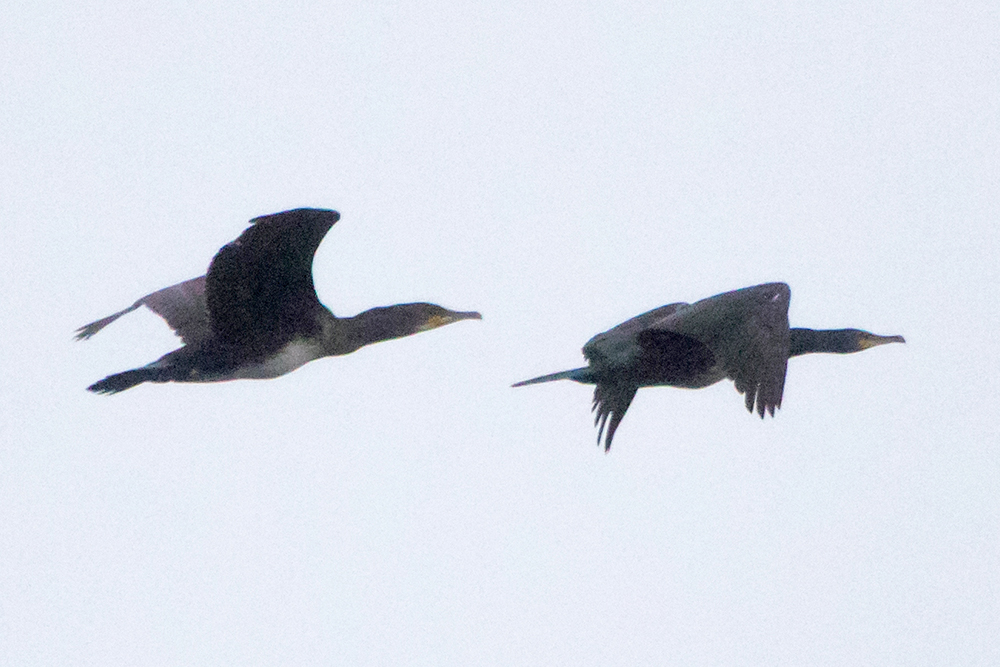
Great Cormorants flying in the misty distance 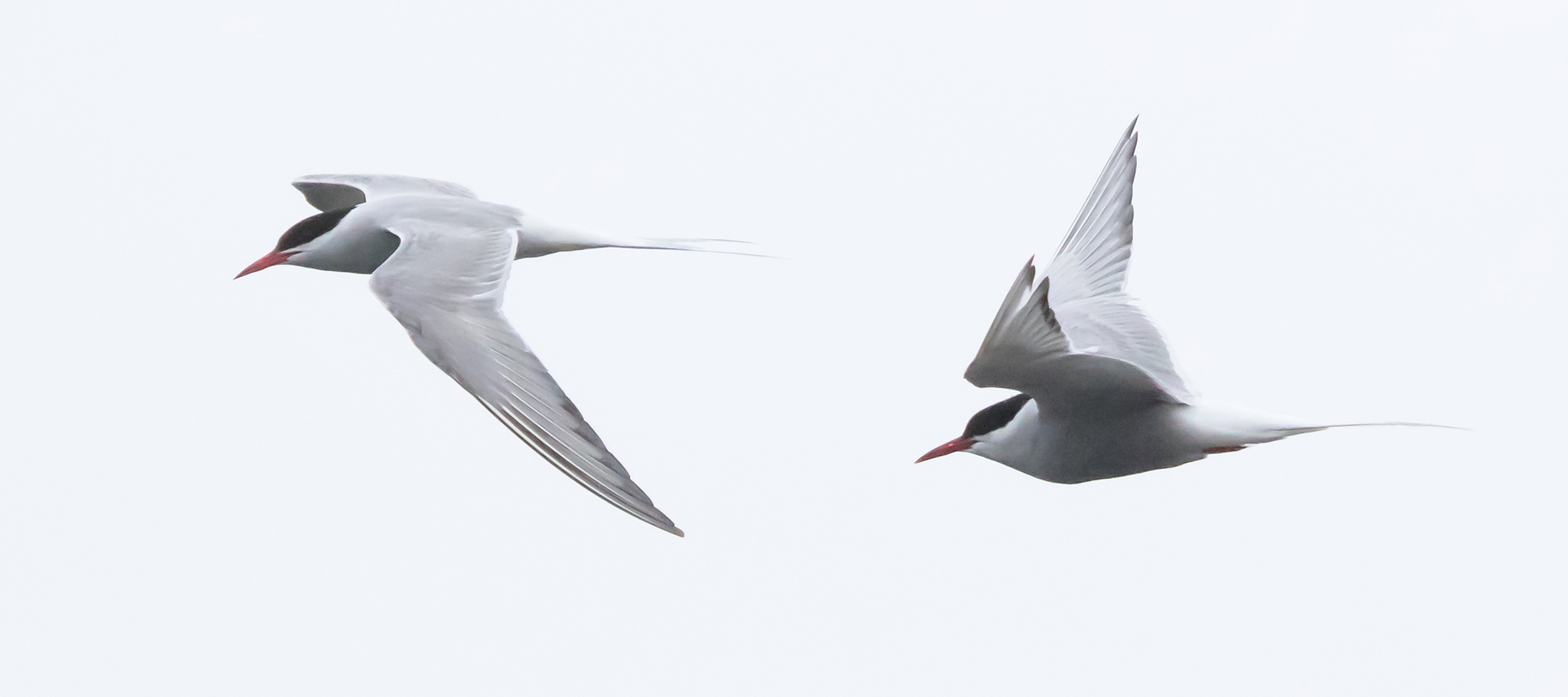
A pair of Arctic Terns in flight  Previous Page | Contents | Next Page
Previous Page | Contents | Next Page ▲
▲
